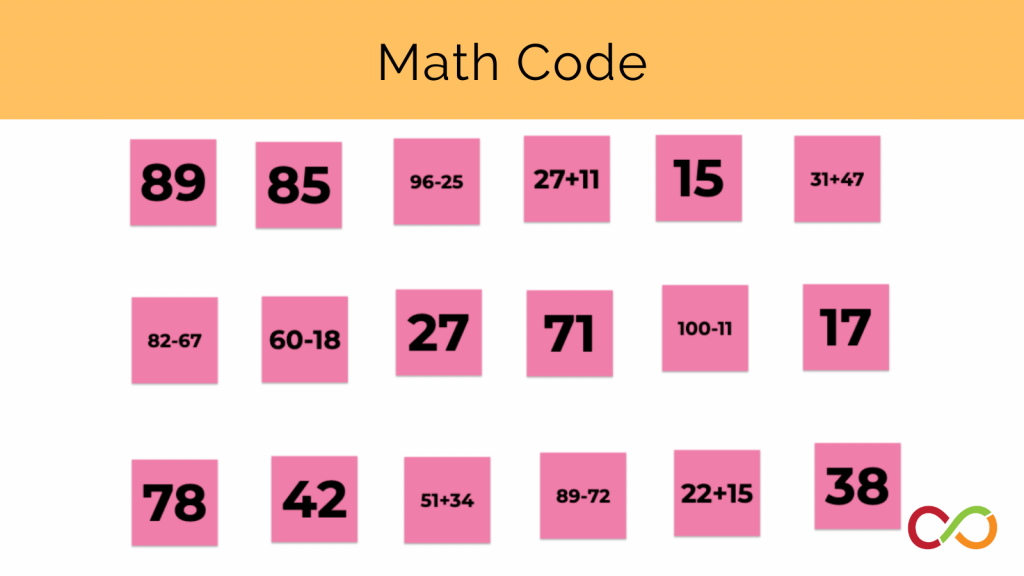We Are the Same
Primary (Age 6 – 9)
Curriculum Goal
Primary: Patterning and Algebra
- Demonstrate an understanding of variables, expressions, equalities and inequalities, and apply this understanding in various contexts.
Context
- This game is best played in an area where children can move around. A line (drawn using chalk or made with tape) should be placed in the middle of the space.
- Students should have experience with addition, subtraction, and identifying equalities.
Materials
- Tape or chalk to place a line in the middle of the space
- Music player
- Cards with mathematical equations, numbers, and dots; each card must have an equivalent match (Appendix A)
- A large piece of paper with an equal sign
Lesson
- Each student receives one of the cards.
- The teacher plays music while students dance or walk around the space. During this time, students will show their cards to each other, allowing students to think about the value of all the different cards.
- When the music stops, each student must determine which student has a card equivalent to their own.
- When they have found their partner, they sit beside each other (one on each side of the line drawn).
- Each group is called to the front to briefly explain why they are equal; if they are correct, they get to hold the equal sign and the whole class gets a point.
- After each group has gone, everyone receives a new card, and the game continues until the class reaches 30 points.
Look Fors
- What strategies do students use to solve their equation? How do students determine equivalency?
- Can students add or subtract two single-digit or double-digit numbers?
- Do the students use mathematical language to discuss their cards with peers?
- Are students counting the number of dots on the card? If so, are they using one-to-one correspondence?
Extension
- Have students organize themselves in a number line from least to greatest.
- Have students create another equation that is equal to their own. Have them explain why their cards are equal. Students gain a bonus point for creating an equivalent equation.
- Introduce cards with multiplication and/or division equations.
Created by Sarah Kelly. Adapted by The Robertson Program.
Share this lesson
Share on facebook
Share on twitter
Share on email

